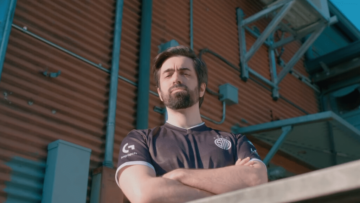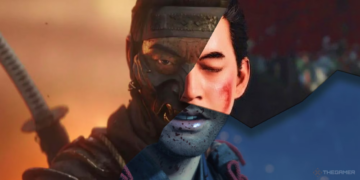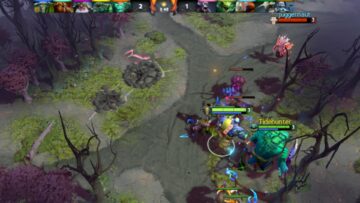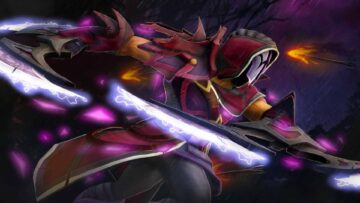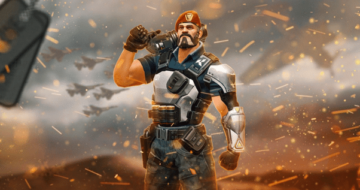It is crucial to choose the class that most closely matches your playing style when playing a game like Baldur’s Gate 3. You might discover, for instance, that you use some skills more often than others or that some races are more similar to certain classes than others. Following our examination of The Warlock class, in this article, we have chosen to give you a general overview of The Wizard class so that you are aware of the quirks of this particular class in Baldur’s Gate 3.
The Wizard class overview
Twelve classes total, including the Wizard, are included in Baldur’s Gate 3. The primary skill of the class is Intelligence, and its saving throw skills are Wisdom and Intelligence. The fact that their Hit Die is 1d6 must also be mentioned. Daggers, darts, slings, quarterstaves, and light crossbows are among the weapons that members of this class are proficient with.
Wizards rely heavily on their spells to support their party because they have very low armor protection and extremely little weapon proficiency. By focusing on certain schools of magic and combining age-old spells with cutting-edge knowledge, wizards are able to master the arcane.
The Wizard class features
We have put together a list of every feature you will have access to if you decide to start your Baldur’s Gate 3 journey as a member of The Wizard class in order to provide you with a more thorough understanding of The Wizard class and all the features it possesses.
- Spell Slots Unlocked: Casting spells uses up your available spell slots. Your two level 1 spell slots are restored after a lengthy rest.
- Proficiency in Intelligence Saving Throws: Increase the number of successful saves by the amount of your Proficiency Bonus.
- Wisdom Saving Throw Proficiency: Increase Wisdom Saving Throws by the amount of your Proficiency Bonus.
- Dagger Proficiency: When making attacks with daggers, add your Proficiency Bonus.
- Dart proficiency: When making an attack with a dart, add your Proficiency Bonus.
- Sling proficiency: Increase all sling-based attacks by your Proficiency Bonus.
- Proficiency with a quarterstaff: Adds your Proficiency Bonus to all attacks.
- Proficiency with Light Crossbows: Increase all Light Crossbow attacks by the amount of your Proficiency Bonus.
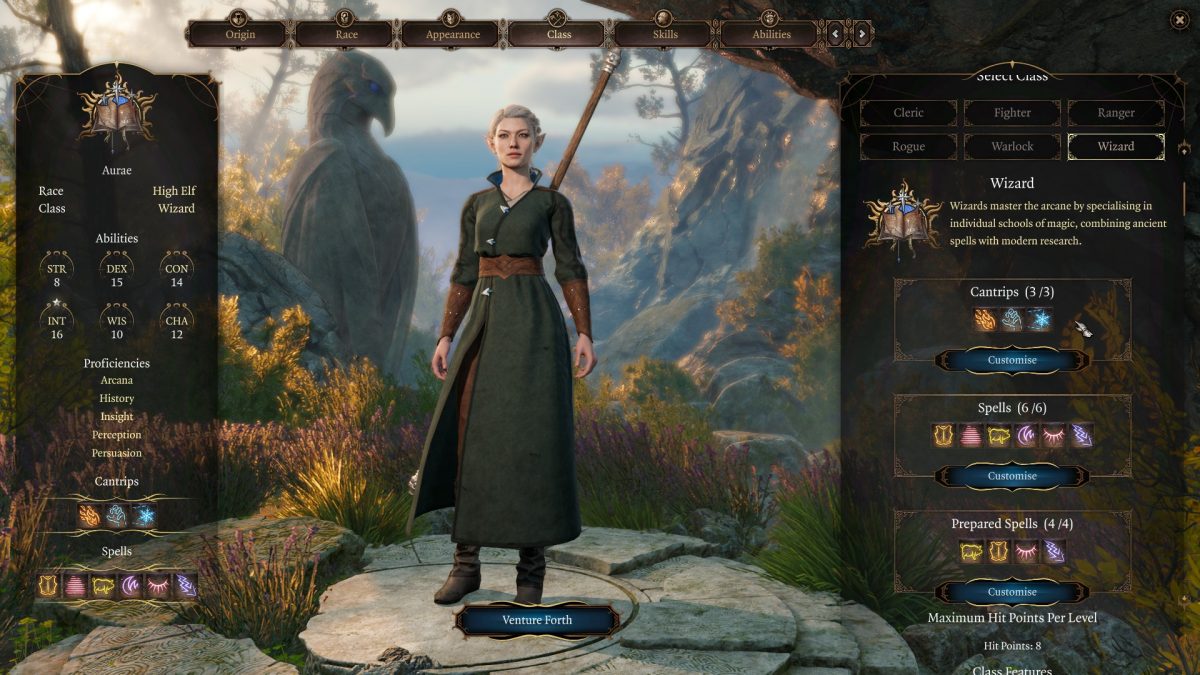

The Wizard subclasses
Any of The Wizard’s eight subclasses are available to players in Baldur’s Gate 3. Subclasses are variations on the primary class that let players keep their parent class’ features while gaining skills and traits unique to that subclass, even if they opt to take different pathways. The following subclasses are among those that the Wizard can belong to:
- Abjuration School
- Arcane Ward: You can conjure a ward with a strand of its magic once per day when you cast an abjuration spell of level 1 or above. The ward lasts until your next long rest. Your whole damage is absorbed by the ward, which has a maximum hit point capacity of three. You take the remaining damage once it has lost all of its hit points, but the magic is still active. Every time you perform an abjuration spell of level 1 or higher, the ward regains a certain number of health points corresponding to twice the spell’s level.
- Conjuration School
- Minor Conjuration: Starting at level 2 when you choose this school, you can use your action to conjure up an inanimate object in your hand or on the ground in an empty place that you can see within 10 feet of you. This ability only works for objects that are in your hand or on the ground. Its dimensions must not exceed 3 feet on a side, its weight cannot exceed 10 pounds, and it must have a shape that is similar to a non-magical object that you have seen. The item radiates a faint light for five feet and is clearly magical.
- Benign Teleportation: At level 6 and higher, you can use your action to teleport up to 30 feet to an empty area that you can see. Alternatively, you can decide on a location in your line of sight that is occupied by a Small or Medium monster.
- Focus Conjuration: When you are focused on a conjuration spell starting at level 10, taking damage won’t cause your concentration to be broken.
- Divination School
- Portent: When you choose this school at level 2, hints of the future start to press in on your awareness. Once a long rest is over, roll two d20s and note the results. Any attack roll, saving throw, or ability check that you or a creature that you can see with one of these foretelling rolls. Only one roll can be replaced in this manner per round, and you must decide to do so before the roll.
- Expert Divination: Starting at level 6, you can cast divination spells with next to no effort, using up a little portion of your spellcasting energy. You gain one spell slot that was expended when you use a divination spell of level 2 or higher. The slot you reclaim must be no more than five levels higher than the level of the spell you just cast.
- The Third Eye: You can start using your action to boost your perceptual abilities at level 10. When you do, pick one of the following advantages from the list (Darkvision and See Invincible), which is valid until you become unable to work or take a short or lengthy break. Once a short or lengthy rest is complete, you can use the feature once more.
- Enchantment School
- Hypnotic Gaze: When you choose this school, you can hypnotize another species starting at level 2 by using kind words and a seductive glance. Pick a creature you can see within five feet of you and take action against it. Targets that can see or hear you must make a successful Wisdom saving throw against your wizard spell save DC in order to avoid being charmed by you until the end of your next turn. The creature that has been charmed loses all movement speed, becomes unconscious, and exhibits obvious signs of confusion. The duration of this effect can be extended until the end of your next turn by using your action on future rounds to maintain it. But if you move farther than 5 feet away from the creature, if it is blind or deaf, or if the creature sustains damage, the effect expires. You are unable to activate this feature on that creature once the effect expires or if it is successfully saved from the creature on its initial attempt, until after a lengthy rest.
- Instinctive Charm: When you reach level 6, you have access to the instinctive charm ability, which allows you to use your reaction to deflect attacks from creatures you can see within 30 feet of you if another creature is nearby. In order to avoid being affected by your wizard spell, the attacker must succeed on a Wisdom saving throw. The creature nearest to it, except you and the attacker, must be the target of the attack if the save is unsuccessful. Choosing which creature to attack depends on which creatures are nearest. Upon a successful save, you are unable to use this ability on the attacker once more until you have finished a lengthy rest. To use this feature, you must do so before learning if the attack was successful or unsuccessful. This effect is not felt by creatures that cannot be charmed.
- Split Enchantment: Beginning at level 10, you can choose to have an enchantment spell of level 1 or above that targets only one creature instead target two creatures using the Split Enchantment ability.
- Evocation School
- Evocation Savant: Reduces by half the price of studying spell scrolls for evocation spells. These spells can be learned at just 25g per spell level.
- Sculpt Spells: Make safe areas within your evocation spells. The saving throws of any allied creatures automatically succeed, and these spells do not harm them.
- Necromancy School
- Grim Harvest: At level 2, you can use your spells to harvest life energy from creatures you kill. You gain health points equivalent to twice the level of the spell, or three times its level if the spell is from the School of Necromancy, once per turn when you kill one or more creatures with a spell of level 1 or higher. If you eliminate constructs or undead, you do not receive this bonus.
- Undead Thralls: If you don’t already have it, you can add the Animate Dead spell to your spellbook at level 6. When you use the Animate Dead spell, you can add a second body or pile of bones as your target to turn it into a zombie or skeleton as necessary. Necromancy spells have extra advantages when you use them to generate the undead. The maximum hit points of the creature are boosted by your wizard level and the creature increases its weapon damage rolls by adding your proficiency bonus.
- Inured to Undeath: At level 10, you gain resistance to necrotic damage and your maximum hit point limit cannot be lowered. You’ve dealt with the undead and the forces that drive them for so long that you’ve grown accustomed to some of their worst effects.
- Illusion School
- Improved Minor Illusion: At level 2, you can learn the Minor Illusion cantrip by selecting this school. If you already know this wizarding spell, you learn an alternative spell of your choice. The cantrip is not added to the total amount of cantrips you know. Minor Illusion allows you to conjure up both a sound and a picture in a single casting.
- Malleable Illusions: Starting at level 6, whenever you cast an illusion spell with a duration of 1 minute or longer, you have the option to alter the illusion’s characteristics using the standard parameters for the illusion. However, you must be able to perceive the illusion in order to do this.
- Illusory Self: Starting at level 10, you have the ability to conjure an illusion of your own image as an instant, almost instinctive response to danger. You can use your reaction to place the illusory duplicate between yourself and the attacker when a creature attacks you and rolls an attack against you. Your defenses immediately miss the attack, and then the delusion fades away. This feature cannot be used again until you have completed a short or long rest.
- Transmutation School
- Minor Alchemy: When you choose this school, you can briefly change an object’s physical characteristics, transforming it from one substance into another, starting at level 2. You use a particular alchemical process to change one thing made entirely of wood, stone, iron, copper, or silver into a different type of one of those materials. You can change up to 1 cubic foot of material for every 10 minutes it takes to complete the process. The material returns to its original form after an hour or until you start to lose focus.
- Transmuter’s Stone: Starting at level 6, you have the option to invest 8 hours in crafting a transmuter’s stone that stores transmutation magic. The stone has uses for both you and another creature, or you can use it yourself. As long as the creature has the stone, it receives a benefit of your choosing.
- Shapechanger: At level 10, if it’s not already in your spellbook, you add the Polymorph spell. Polymorph can be used without using a spell slot. You can do this while transforming into a beast with a difficulty rating of 1 or lower, and you can only target yourself. After casting Polymorph in this manner, you are unable to do so until after a short or long rest, though you can still cast it properly using a spell slot that is open.
- SEO Powered Content & PR Distribution. Get Amplified Today.
- PlatoData.Network Vertical Generative Ai. Empower Yourself. Access Here.
- PlatoAiStream. Web3 Intelligence. Knowledge Amplified. Access Here.
- PlatoESG. Automotive / EVs, Carbon, CleanTech, Energy, Environment, Solar, Waste Management. Access Here.
- BlockOffsets. Modernizing Environmental Offset Ownership. Access Here.
- Source: https://estnn.com/baldurs-gate-3-classes-the-wizard-class-and-subclasses/
- 1
- 10
- 30
- 8
- a
- A side
- abilities
- ability
- able
- above
- access
- Action
- active
- add
- added
- adding
- adds
- advantages
- affected
- after
- again
- Against
- Alchemy
- All
- allows
- already
- also
- alternative
- among
- amount
- an
- and
- Animate
- Another
- any
- ARE
- AREA
- areas
- article
- as
- At
- automatically
- available
- avoid
- aware
- awareness
- away
- Baldur's Gate
- baldur’s gate 3
- BE
- because
- become
- becomes
- been
- before
- beginning
- being
- Belong
- benefit
- between
- body
- bones
- bonus
- Boost
- Boosted
- both
- break
- broken
- but
- by
- CAN
- Capacity
- casting
- Cause
- certain
- change
- characteristics
- choice
- choose
- Choosing
- chosen
- class
- classes
- clearly
- closely
- combining
- complete
- completed
- concentration
- confusion
- copper
- crafting
- crucial
- cutting-edge
- damage
- Danger
- day
- dc
- dead
- decide
- depends
- different
- difficulty
- discover
- do
- don
- drive
- duration
- Effect
- effects
- effort
- Eliminate
- end
- energy
- entirely
- equivalent
- even
- Every
- except
- extremely
- eye
- fact
- Feature
- Features
- Feet
- Focus
- focused
- focusing
- Following
- For
- forces
- foretelling
- form
- from
- future
- gain
- gaining
- game
- General
- generate
- give
- glance
- Ground
- grown
- guide
- half
- hand
- harm
- harvest
- has
- Have
- Health
- hear
- heavily
- higher
- hints
- HIT
- hour
- hours
- however
- HTTPS
- if
- Illusion
- image
- immediately
- in
- Included
- Including
- Increase
- increases
- initial
- instance
- instant
- instead
- Intelligence
- into
- invest
- Is
- IT
- ITS
- journey
- just
- keep
- kind
- know
- knowledge
- LEARN
- learned
- learning
- Level
- levels
- Life
- light
- like
- LIMIT
- Line
- List
- Little
- location
- Long
- longer
- lose
- lost
- Low
- lowered
- made
- Magic
- maintain
- make
- Making
- manner
- master
- matches
- materials
- maximum
- medium
- member
- Members
- might
- minor
- minute
- minutes
- more
- most
- move
- movement
- must
- necessary
- Next
- no
- not
- number
- objects
- obvious.
- of
- often
- on
- once
- One
- only
- open
- Option
- or
- order
- original
- Others
- our
- over
- own
- particular
- Party
- per
- perform
- physical
- pick
- picture
- place
- plato
- plato data intelligence
- platodata
- platogaming
- players
- Playing
- Point
- Points
- pounds
- press
- price
- primary
- Process
- protection
- Provide
- put
- Rating
- reach
- reaction
- receive
- Receives
- reduces
- rely
- response
- REST
- Results
- returns
- Roll
- rolls
- round
- rounds
- s
- safe
- save
- saves
- saving
- School
- Schools
- second
- see
- seen
- self
- shape
- Short
- side
- sight
- Signs
- Silver
- similar
- single
- skill
- skills
- slot
- Slots
- small
- So
- some
- sound
- speed
- split
- standard
- start
- Starting
- still
- Stone
- stores
- studying
- style
- substance
- succeed
- successful
- successfully
- support
- Take
- takes
- taking
- Target
- than
- that
- The
- The Future
- their
- Them
- then
- These
- they
- thing
- third
- this
- those
- though
- three
- time
- times
- to
- together
- total
- transforming
- turn
- Twice
- two
- type
- unable
- understanding
- unique
- until
- up
- upon
- use
- used
- uses
- using
- ve
- very
- was
- we
- weapons
- when
- whenever
- while
- whole
- will
- with
- within
- without
- wood
- words
- Work
- works
- worst
- you
- your
- yourself
- zephyrnet


